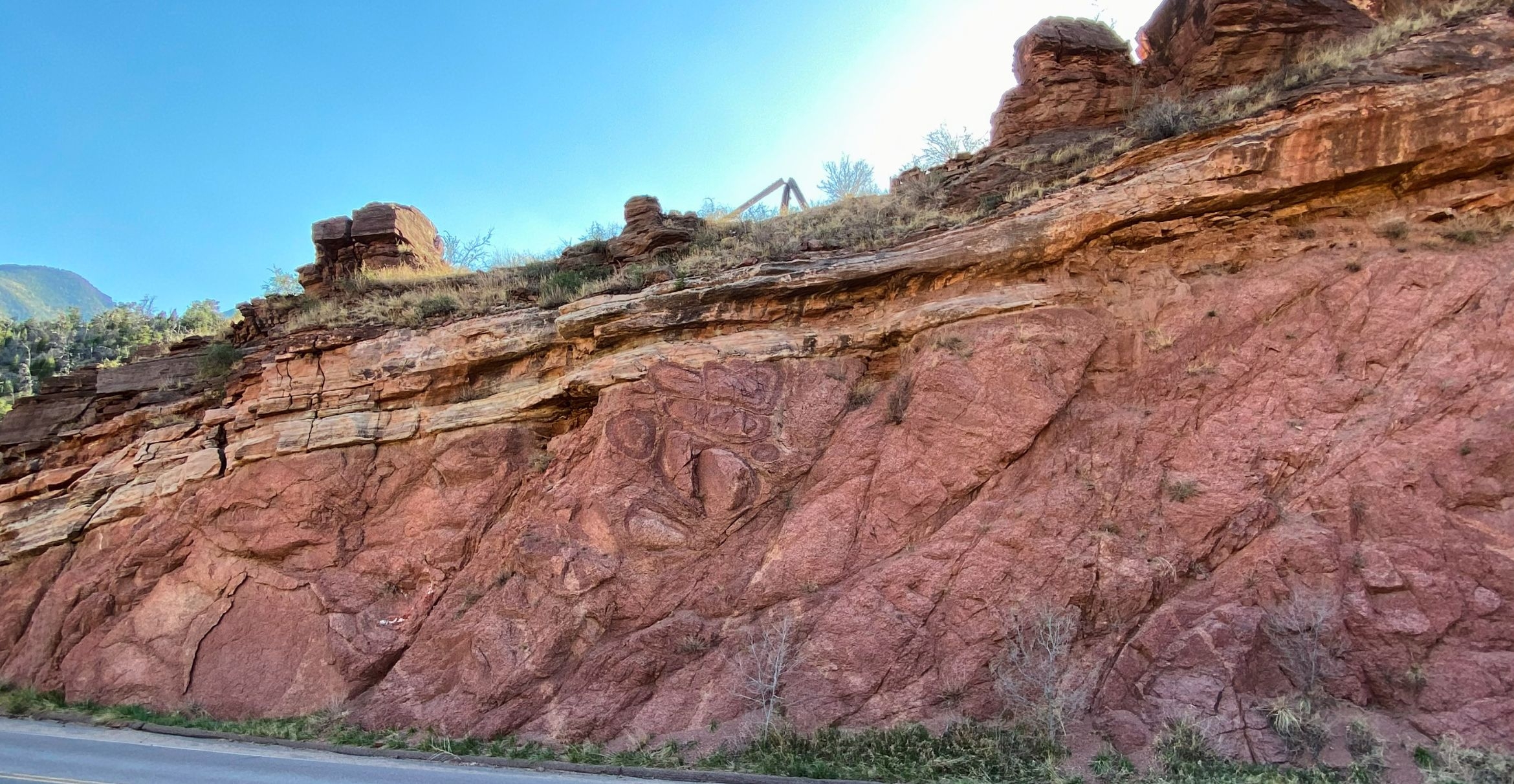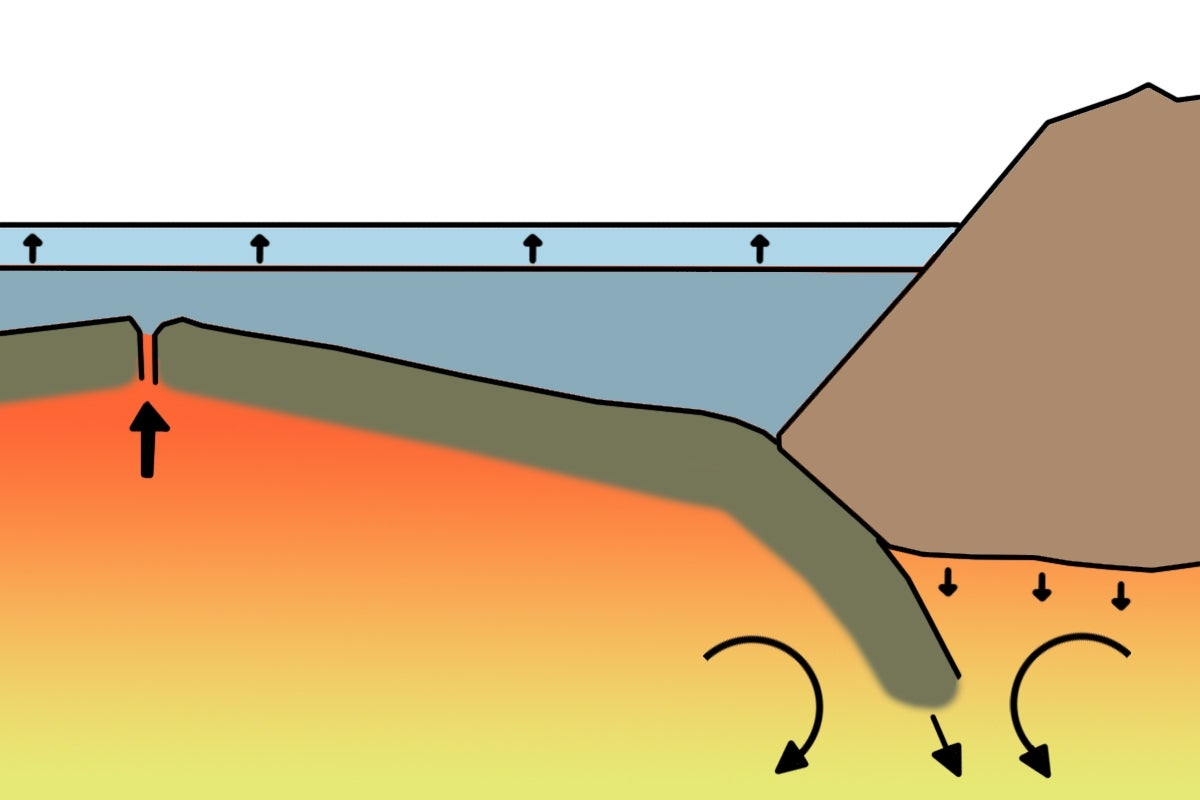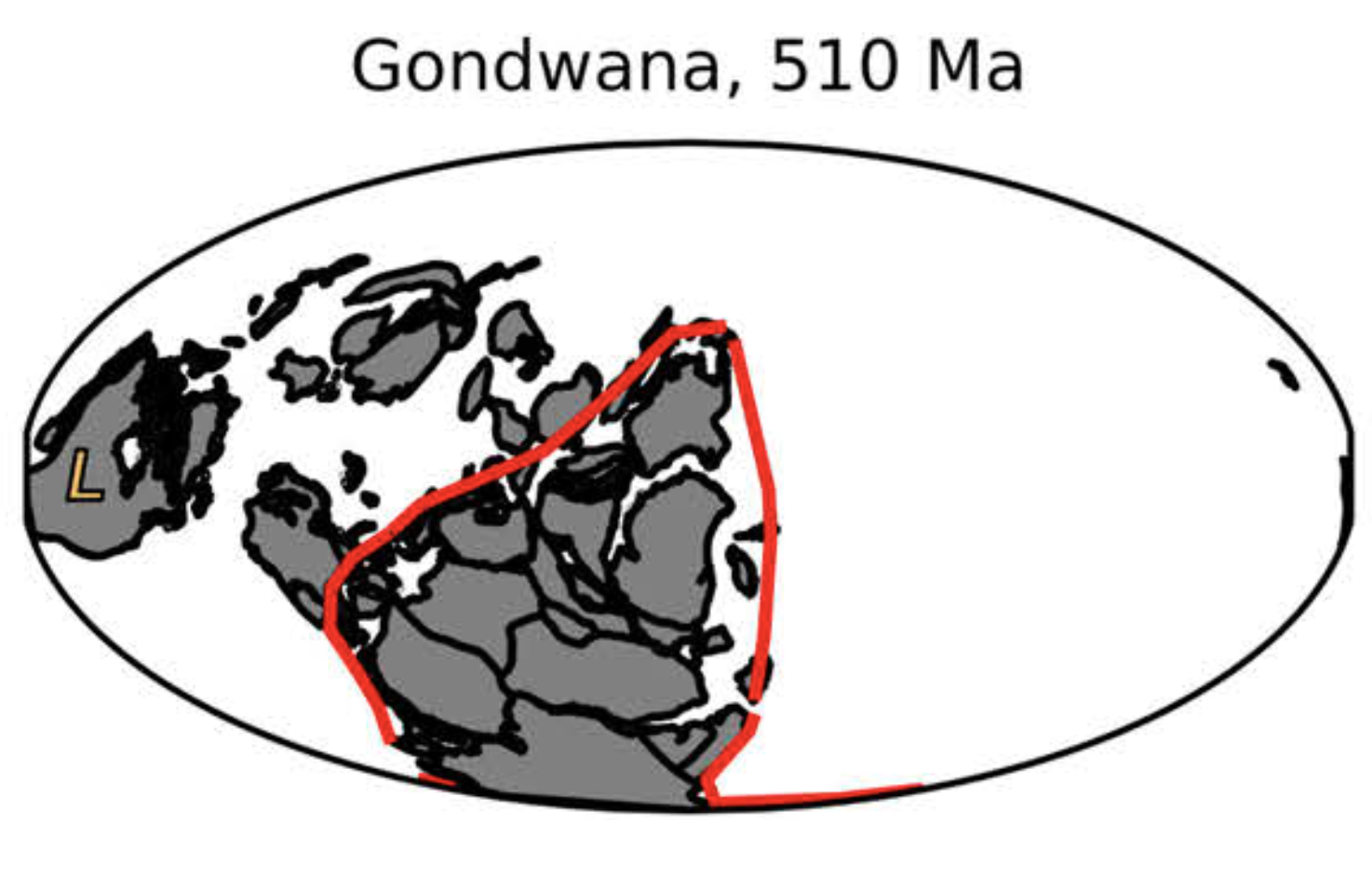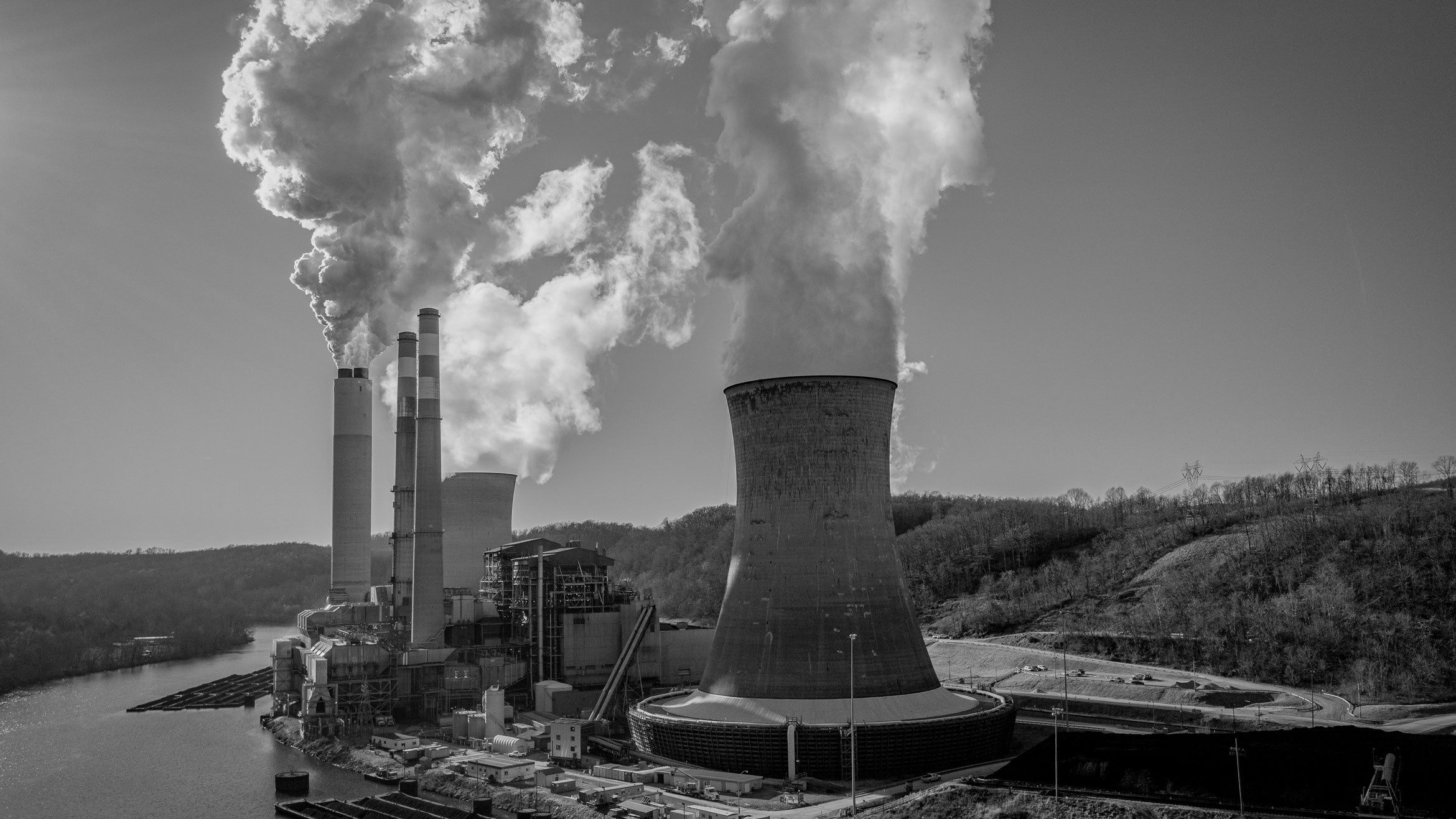
Geologists link continental flooding to subduction, with consequences for geologic gaps and the rise of complex life
Around 510 million years ago, after a major gap in the geologic record, the world flooded. This gap, known as the Great Unconformity, starts at different ages in different places, but it always concludes with a flood. Geologists find sedimentary rocks from this time that were laid down in coastal and marine environments deep within continental interiors. They call it the Sauk Transgression.
Continental flooding of this scale occurred roughly five times in North America over the past 510 million years, with the first immediately following the Great Unconformity. This intrigued geologists like UC Santa Barbara’s Adrian Tasistro-Hart, who suspected that these flooding events and unconformities may have a shared root in global geodynamics. He set out to explain this first impressive flooding event, which is the unifying feature of the Great Unconformity.
Tasistro-Hart found that active subduction at continental margins could account for these flooding events. He and his coauthor, Professor Francis Macdonald, published their results in the Proceedings of the National Academy of Sciences. In the process, they realized that the tale of the Sauk Transgression could be merely one chapter in a broader story of supercontinents, changing mantle dynamics and the rise of complex life.
“You have this event that happens in 5, 10 or maybe 15 million years, that floods North America from California to Wisconsin,” said Tasistro-Hart, a doctoral student in the Department of Earth Sciences. “That is something big and new in Earth’s history, and no one has really had a great explanation for why that happened.”

Adrian Tasistro-Hart
Adrian Tasistro-Hart is a sedimentary geologist working on deep time Earth history. He uses stratigraphy and geochronology to understand how geology records past climate conditions, geodynamics, and the interplay between life, chemistry and geology. He’s particularly interested in the Cryogenian snowball Earth, as well as climate evolution before that, and the history and mechanics of sea level variability.
Fortunately, he had a framework to guide him. Spreading ocean basins account for most of the new crust on Earth. Young, warm, buoyant oceanic crust rises, lifting up the water above it. So, if you have more new oceanic crust — either due to faster spreading or a longer spreading center —you end up displacing more water, Tasistro-Hart explained.
This oceanic crust eventually needs to go somewhere, though, so faster spreading on one end of an oceanic plate drives more subduction on the other end, forcing the plate under its neighbor and back down into the mantle. What’s more, because Earth maintains a constant volume, expansion in one area (say hot, young oceanic crust) must be counterbalanced by subsidence somewhere else. Scientists believe that the subducting slab sucks down the overlying plate, equalizing the system.
Sea level should remain relatively constant if one ocean plate slips under another; the water simply evens out between the elevated and lowered crust. If the overlying plate is a continent, however, then the combined effect of lifting the ocean water and lowering the adjacent landmass raises sea level.

Photo Credit: Daniel Smith
Buoyant young oceanic crust displaces the water above it (left). When the crust dives under the adjacent continent, friction and eddies in the mantle suck down the overlying plate, further raising sea level.
Following this theory, Tasistro-Hart suspected he’d find evidence of subduction at the margins of North America during periods when it was flooded. So he looked at marine sediments in Macrostrat, a geospatial database of sedimentation across North America. He plotted the extent of marine sediments over time to track where and when the continent was flooded. He then searched the literature for information about granites formed in continental arcs, the volcanism resulting from subduction. This gave him an idea of where and when subduction was occurring at the continental margins.
With a bit of statistical analysis, Tasistro-Hart found a correlation between subduction activity and continental flooding. Although the flooding was quite different for each of the five events, it was closer to the margins of the continent where there was active subduction. So, the data and theory seem to fit nicely. Except for the Sauk Transgression.
“There was no subduction around any part of North America during the Sauk Transgression,” Tasistro-Hart said. “So that seems to be a problem for the story that I’m spinning.”
Flooding in North America also correlated with the global sea level. “It seems a bit paradoxical that it would relate to both local and global phenomena,” he said.
Returning to the theory suggests that there must then be subduction happening under some other continent, which is exactly what Tasistro-Hart set out to find. It turns out, the rest of the continents were quite preoccupied at this time, 510 million years ago. They had just finished coalescing into the supercontinent Gondwana, and the entire perimeter of the landmass was surrounded by subducting oceanic crust.
“Nothing was happening around North America but a lot was happening around Gondwana,” Tasistro-Hart said. “Subduction is sucking down all of Gondwana, meanwhile you’re lifting up the oceans, and that displaces water everywhere: onto Gondwana, but also onto North America. And that’s what I think caused the Sauk Transgression.”

“This work provides the first geophysical explanation for the flooding that defines the Great Unconformity,” said Macdonald, Tasistro-Hart’s advisor and co-author.
However, rather than settling questions, this paper refines the hypothesis for the Sauk Transgression. Now Tasistro-Hart plans to test his explanation against the geologic record. One prediction is that Gondwana should have evidence of flooding during this time period. Fortunately, the information to answer this question already exists. It’s just up to Tasistro-Hart and his colleagues to compile the work into a large database for Gondwana.
Understanding the continental flooding is of interest to more than just geologists. Some scientists believe that the Sauk Transgression could have contributed to the evolution of complex life. An inland seaway is much shallower than an ocean basin, so organic debris can reach the seafloor more quickly, locking away the carbon it contains. As a result, the oxygen that would have gone toward breaking down that material can instead remain in the environment. The increased availability of oxygen, combined with new ecological niches for life to occupy, could have kickstarted the evolution of multicellular life. This development marks the fourth, and current, eon of Earth’s history: the Phanerozoic.
But why isn’t there any evidence of major flooding events before the emergence of complex life? It seems too coincidental. Did geology set the stage for life to become multicellular, or did biology trigger a change in the geodynamics?
Well, there actually is potential evidence for extensive flooding from before the Phanerozoic. “I don't think anyone has grappled with that record, which is also quite incomplete due to erosion,” Tasistro-Hart explained. “So we just don't have enough information to come down hard on whether flooding of continents is a novel phenomenon in the Phanerozoic. But it seems like it might be, which is a very intriguing possibility.”
A recent paper by Professor Taras Gerya at ETH Zurich suggests that a plate descending into a warmer mantle breaks apart more quickly. As the mantle cooled, longer slabs could remain intact and exert more downforce on the overlying plate. Geodynamic models suggest the mantle may have cooled enough for this effect to become significant 1,000 to 540 million years ago, potentially right before the emergence of complex multicellular life.
Investigating what caused the Sauk Transgression has revealed a bigger story, with broader questions. “That is the most exciting part of this paper,” Tasistro-Hart said, “having an explanation for that first, and the subsequent, flooding events that seem to be potentially new dynamics for Earth that begin in the Phanerozoic.”
Harrison Tasoff
Science Writer
(805) 893-7220
harrisontasoff@ucsb.edu



